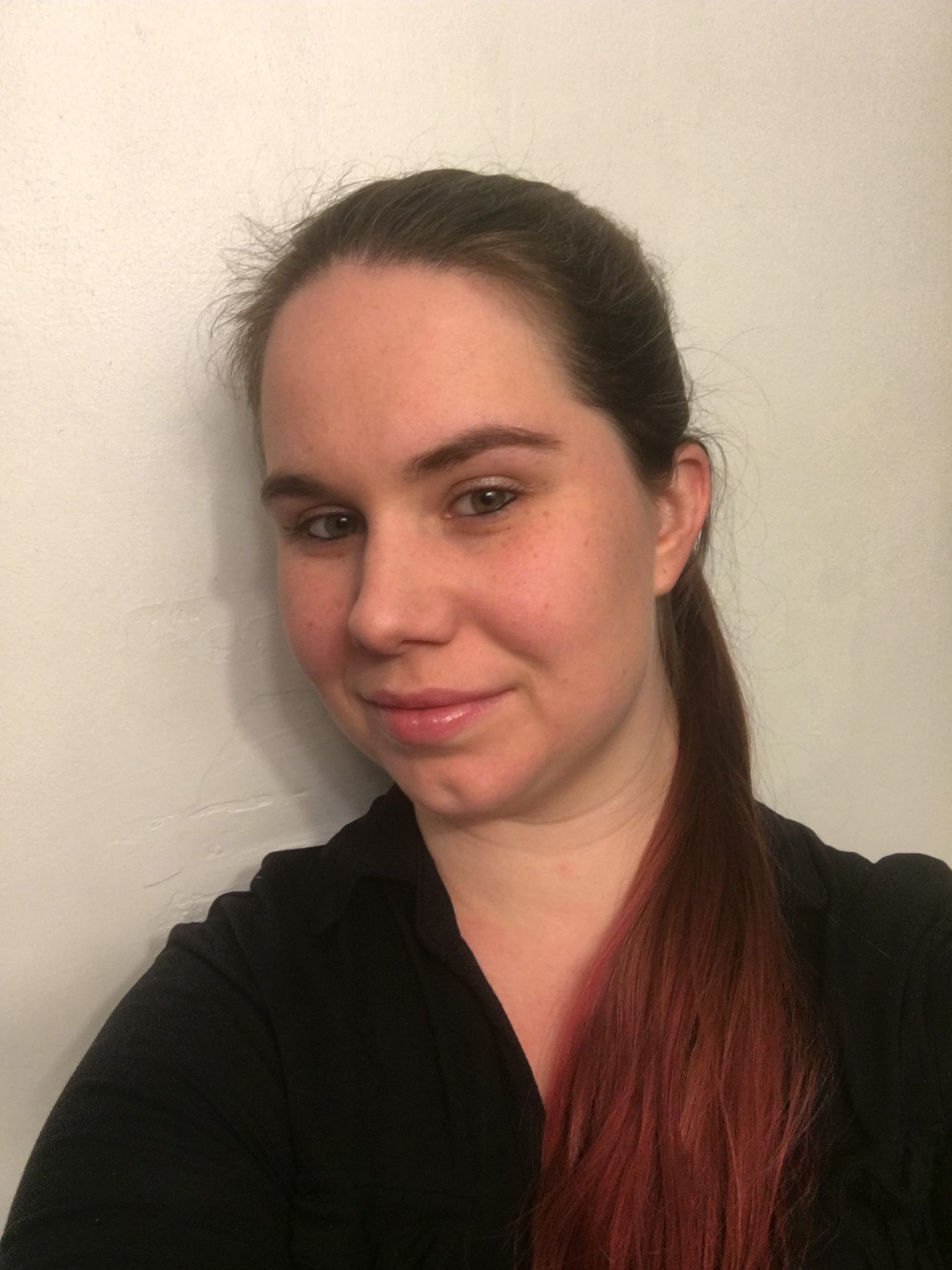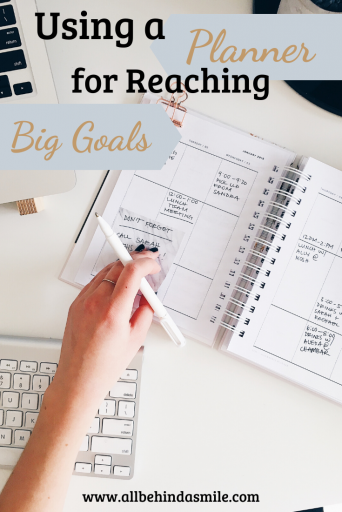
Christian, wife, “hybrid” mama, I run the site All Behind A Smile to help others like me.
by Nicole 4 Comments
It was near the end of the year when it came to me. I had been struggling with reaching my big goals; the day-to-day tasks kept getting in the way.
Having just bought a new planner for the coming year, my gears were turning.
What if I planned the coming year down to day-to-day tasks at the end of the current year?

This concept will make more sense after I share how I usually use my planner.
My planner is divided into a vertical layout with the days of the week and the date at the top. The column for each day is divided into three sections.
Eventually, I stumbled upon using the top of the column (the first section) to write my most important tasks, the middle to write my should-do tasks, and the bottom to write tasks that I’d like to do, but may not be able to fit into my schedule.
(You may have heard these referred to as A, B, and C tasks. My mom, who recently started using this method, likes to refer to them as her rocks (A tasks), pebbles (B tasks), and sand (C tasks) after the analogy of the jar where you have to fit the largest items first if they are all going to fit.)
Essentially, my planner is where I keep my to-do list.
I also write appointments in my planner; these can be highlighted so they stand out. As appointments are not a major portion of my day-to-day life, I wanted to create a habit of referring to my planner regularly. Putting my to-do list in my planner helped create that habit, and now I love the combination.
Now that you know the basis of this idea, let’s work on the actual break down of goals.
At the end of the year, I sat down and made a list of all of my big goals and projects. Then I put them in order by priority.
Following that, I made a sub list for each goal and project – of every task that needed to be done for each. I recommend starting with a scrap piece of paper – you will probably end up scratching off and rearranging items.
Once the tasks were arranged by which had to happen first, I started in my new planner. Writing in pencil so I could change tasks as needed, I wrote one to two tasks on each workday for the coming year – depending on the amount of time I estimated that the task would require.
Tasks that would take longer were given multiple days – if they turn out not to require that length of time, there will be plenty of other tasks that come up to fill the space.
You could plan your entire year this way, or start with just a few months to see how it works. Starting with just a few months may be less overwhelming, as well.
The exciting part is, not only do you get to work on your big goals and know you are making progress – you are planning those big goals into every day – but when you reach one big goal you get to start another!
Just make sure you add enough cushion between goals to accommodate for falling behind, if a task takes longer than planned for.
Even better, laying out your year or a few months helps plan for vacations. For example, I know that my husband and I will be out of town (without internet access) for most of Thanksgiving week. Planning for that to be a vacation time, I planned out my tasks so that the important ones fall before that week.
The tasks that could wait, I scheduled after that week.
Now there is less stress overall about whether or not I’m reaching my big goals – and the day-to-day tasks still get done!
Wondering about the day-to-day tasks?
By only scheduling one to two big goal tasks per day (depending on time estimations), you leave room in your schedule to get some of the “B” and “C” tasks done.
It also leaves room for unexpected events, or appointments that you may not have scheduled that far in advance.
Although this idea was designed to work with my schedule, I believe it could be tweaked to with other schedules as well. Although the tasks may have to be spread out further to account for work or taking care of family, even slow progress is progress!
How do you make time for reaching your big goals?

Christian, wife, “hybrid” mama, I run the site All Behind A Smile to help others like me.
[…] even MORE details on how I use my planner for goals? Read Using a Planner for Reaching Big Goals – and note that this article also details a DIFFERENT way to use your planner when you […]
[…] an aside, if you like to set big goals but have trouble staying on track with them, consider Using a Planner to Reach Big Goals – the method I use for staying on track and accomplishing my goals – New Year or […]
[…] progress every day? If you are ready to push past your fear and see some forward momentum, read Using a Planner for Reaching Big Goals. It’s a great help in organizing your thoughts and getting the steps for each goal on paper […]
This site uses Akismet to reduce spam. Learn how your comment data is processed.


[…] More of a planner person than the bullet journaling type? I use both a planner and two bullet journals. See how I use my planner to tackle big goals here. […]